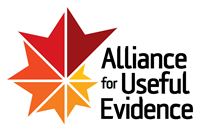Impact Reporting - simple, practical and inspiring?
Impact Reporting - simple, practical and inspiring?
by Jaan Aps, Chairman of Estonian Social Enterprise Network and owner of Stories For Impact
Gathering the resources to build a massive power-plant… for heating a rather small wooden house? That’s how the majority of grass-root level change-makers really feel about setting up a system for evaluating and reporting their impact. The solution is standardisation combined with one-to-one or group mentoring.
Most social purpose organisations in any country are small or medium sized. Despite looking deceivingly inconsiderable, they are the ones who – as a cluster – have the potential to fulfil the needs of most of the communities and disadvantaged groups. They are the ground for growing large-scale innovative social enterprises. Even those that do not want or succeed to grow tend to remain as indispensable stakeholders in any community-level collective impact initiative.
The following picture outlines:
- some of the problems such organisations have in relation to the three main pillars of the social impact topic (defining, analysing and communicating); and
- the solutions we have worked out and successfully implemented in Estonia.
The standardised format has been tried out by many of the members of the Estonian Social Enterprise Network (as a “soft” membership criterion). Also, some other civil society key stakeholders have opted to use it (e.g. Estonian Association of Large Families).
Compiling the report acts as a catalyst for learning and change for the teams of social purpose organisations. As the photo below demonstrates, we have designed it to be an exciting and challenging process for them!
SIAA’s annual conference “Talking Data: Measurement with a message” will be a great place to learn more about the format and to contribute to its further development.
My vision is to inspire at least some of SIAA’s members and friends to promote a common format that will become the impact accounting disclosure standard for social purpose organisations in their respective countries. Without strong efforts to establish such standard, the impact analysis and communication of (smaller) social-purpose organisations will forever be scattered, unnecessarily confusing and resource-consuming.
One of the main advantages of the format is that it doesn’t dictate how the content is exactly created (as long as the output accords with certain quality standards). I truly hope my workshop at Talking Data, “Simple, efficient and creative solutions for small-scale changemakers”, will spark the discussion – and give participants many valuable hints to be used in their everyday work immediately, even if the larger vision seems too far at the moment.
Below is an example of how the Estonian format looks.
- Why should most of small-scale social purpose organisations have more than one theory of change?
- How can we try out monetization for the organisations with no resources for research?
- In which ways can we support the changemakers so that they really can get the reports completed despite chronic lack of time?
All those questions will be answered at SIAA’s 2014 Annual Conference in November (or earlier, if you write and ask personally).
P.S. Get to know some of the examples of social enterprise reports here and learn about the successful (ongoing) impact journey of Estonian Association of Large Families here.
Jaan Aps runs a social business called Stories For Impact. It provides solutions for identifying, evaluating and communicating societal impact. As an activist, he leads Estonian Social Enterprise Network as a voluntary chairman. Jaan Aps tweets @stories4impact.
This blog was first posted on the Talking Data conference website. Read the original blog here.





